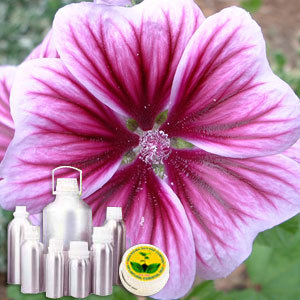 | Botonical Name | : | Pelargonium graveolens |
 | CAS # | : | 8000-46-2 |
 | Country of Origin | : | Egypt |
 | Color & Odor | : | Greenish yellow viscous liquid with sweet and herbaceous scent |
 | Solubility | : | Soluble in alcohol, insoluble in water |
 | Specific Gravity | : | 0.865 – 0.988 @ 20°C |
 | Optical Rotation | : | (-8.00) - (-14.00) |
 | Refractive Index | : | 1.450 – 1.475 @ 20°C |
 | Flash Point | : | >100°C |
 | Plant Part Used | : | Leaves |
 | Extraction Method | : | Solvent Extraction |
DESCRIPTION:
Geranium Egyptian plant is a hairy perennial shrub, with pointed leaves, serrated at the edges and pinkish-white flowers. It is often used in hedgerows and can grow up to about one meter high (3 feet). CONSTITUENTS:
Citronellol, geraniol, 10-epi-g-eudesmol. AROMATIC SUMMARY / NOTE / STRENGTH OF AROMA:
Geranium Leaf Absolute has a scent that is both sweet and herbaceous, while carrying some subtle notes similar in character to Rose.BLENDS WITH:
It mixes well with Angelica, Basil, Bergamot, Carrot seed, Cedarwood, Citronella, Clary Sage, Grapefruit, Jasmine, Lavender, Lime, Neroli, Orange and Rosemary. COMMON NAMES:
Geranium Egyptian.USES:
It can be used in the treatment of acne, bruises, burns, cuts, dermatitis, eczema, hemorrhoids, lice, mosquito repellant, ringworm, ulcers, breast engorgement, edema, poor circulation, sore throat, tonsillitis, PMS, menopausal problems, stress and neuralgia.


































